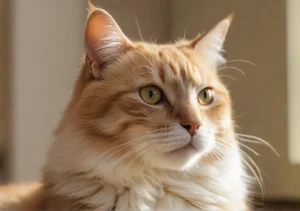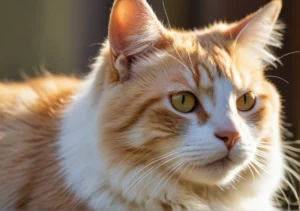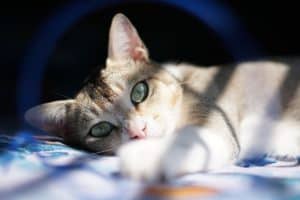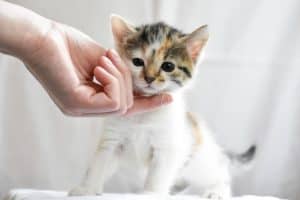Are you a cat owner noticing your furry friend twitching more often? One common cause of this behavior in cats is kidney disease. But why do cats with kidney disease twitch? Let’s explore the reasons behind this phenomenon and how you can help your beloved pet.
Cats with kidney disease may experience twitching due to a variety of factors, such as electrolyte imbalances, nerve damage, or muscle weakness. Understanding the underlying causes can help you provide the best care for your feline companion. Let’s take a closer look at why cats with kidney disease may exhibit twitching behavior.
Symptoms of Kidney Disease in Cats
Kidney disease in cats is a common ailment that can have serious consequences if not addressed promptly. Increased thirst, weight loss, and lethargy are some of the key symptoms to watch out for in your feline friend. If you notice your cat drinking more water than usual or experiencing unexplained weight loss, it might be time to consult with your veterinarian. Lethargy or a lack of energy can also be a sign that something is amiss with your cat’s health. Keep an eye out for these symptoms and be proactive in seeking medical attention if needed.
Twitching in Cats: A Sign of Discomfort
When cats with kidney disease start to twitch, it can be a concerning sign of discomfort or pain. Twitching may indicate that your cat is experiencing muscle spasms or cramps due to the strain that kidney disease puts on their body. If you notice your cat twitching, especially during movement or when touched in certain areas, it’s essential to address their discomfort promptly. Providing a comfortable and quiet space for your cat to rest, gentle massage, and ensuring they have access to fresh water can help alleviate their symptoms. Additionally, discussing with your veterinarian about pain management options for your furry companion can also be beneficial in improving their quality of life.
Additional Unique Insight:
Offering your cat a warm and cozy environment can help in soothing their muscles and providing them with a sense of comfort. Consider providing a soft blanket or heated cat bed for them to relax in, which can aid in reducing twitching and promoting relaxation in cats with kidney disease.
Remember, always consult with a veterinary professional for personalized advice and treatment options tailored to your cat’s specific needs. By staying vigilant and proactive in caring for your feline friend, you can help them lead a comfortable and fulfilling life despite their kidney disease diagnosis.
Treatment Options for Kidney Disease
If your furry friend is experiencing twitching due to kidney disease, it’s essential to explore various treatment options to ease their discomfort. Medication prescribed by a veterinarian can help manage symptoms and improve quality of life. Additionally, dietary changes tailored to support kidney function can play a crucial role in slowing down the progression of the disease. Providing supportive care such as hydration therapy and regular check-ups is also vital in managing kidney disease in cats. Remember, always consult with a professional to determine the best course of action for your pet’s specific needs.
Managing Twitching in Cats
Seeing your beloved cat twitch can be concerning, especially when it’s linked to kidney disease. To help reduce twitching episodes, create a comfortable environment for your feline friend. This includes providing a cozy bed, quiet spaces, and a stress-free atmosphere. Monitoring their symptoms closely is key to understanding their condition better and seeking timely intervention when needed. By staying attentive and proactive, you can ensure your cat receives the care they deserve.
Additional Unique Insight:
- Regular exercise tailored to your cat’s abilities can help improve overall health and reduce stress, potentially minimizing twitching episodes. Ensure to engage in safe and low-impact activities to keep your furry companion active and happy.
Importance of Regular Veterinary Check-ups
Regular veterinary check-ups are crucial for cats with kidney disease. These check-ups help in early detection and proper management of their condition. By visiting the vet regularly, any changes in your feline friend’s health can be identified early on, leading to prompt treatment and better outcomes. Kidney disease can progress quickly, so staying on top of your cat’s health with regular check-ups is key to maintaining their quality of life.
Tips for Caring for Cats with Kidney Disease
When caring for cats with kidney disease, creating a low-stress environment is essential. Stress can exacerbate their condition, so keep their living space calm and comfortable. Monitor their water intake closely to ensure they stay hydrated. Additionally, maintaining a balanced diet is crucial – look for specially formulated renal diets at your veterinarian’s recommendation. Providing these key elements in their care regimen can help your cat feel more comfortable and improve their overall well-being.
- Monitor Water Intake: Keep an eye on how much water your cat is drinking each day to ensure they stay hydrated.
- Maintain a Balanced Diet: Opt for specially formulated renal diets to support your cat’s kidney health.
- Provide a Low-Stress Environment: Create a peaceful living space to minimize stress levels for your furry companion.
By following these tips and staying vigilant about your cat’s health, you can help them live a comfortable and happy life despite their kidney disease.
Understanding Your Cat’s Needs
If your feline friend has kidney disease and you notice them twitching, it could be due to discomfort or pain associated with the condition. Cats with kidney disease may experience muscle twitches or spasms as a result of electrolyte imbalances or nerve damage. It’s essential to consult with your veterinarian to determine the underlying cause of the twitching and provide appropriate treatment to help your cat feel more comfortable.
Fun Fact: Cats and Twitching Behavior
Did you know that cats often twitch during REM sleep? During this stage of sleep, cats may twitch, wiggle their whiskers, or even vocalize. This behavior is completely normal and is believed to be associated with dreaming. So, if you catch your cat twitching while they sleep, it’s likely they’re just in the midst of a vivid dream!
Ways to Help Your Cat with Kidney Disease:
- Monitor water intake: Encourage your cat to drink water regularly to prevent dehydration, a common issue in cats with kidney disease.
- Low protein diet: Consider switching to a low-protein diet recommended by your veterinarian to reduce the workload on your cat’s kidneys.
- Regular vet check-ups: Schedule routine check-ups to monitor your cat’s condition and make any necessary adjustments to their treatment plan.
- Incorporate supplements: Talk to your vet about adding supplements like Omega-3 fatty acids or B vitamins to support your cat’s kidney health.
- Maintain a stress-free environment: Minimize stressors in your cat’s environment to help reduce their anxiety levels, which can impact their overall well-being.
Remember, providing love, care, and proper treatment can help your cat with kidney disease lead a comfortable and fulfilling life.
Why do Cats with Kidney Disease Twitch?
It is not uncommon for cats with kidney disease to experience twitching. This behavior can be attributed to a variety of factors, such as muscle weakness, nerve damage, or electrolyte imbalances. Kidney disease can impact a cat’s overall health, leading to these involuntary movements.
Here are some common reasons why cats with kidney disease may twitch:
- Muscle Weakness: Cats with kidney disease may experience muscle weakness, leading to twitching or tremors in their limbs.
- Nerve Damage: The progression of kidney disease can also affect nerve function, causing twitching in different parts of the body.
- Electrolyte Imbalances: Kidney disease can disrupt the balance of electrolytes in a cat’s body, which may result in muscle twitching.
If you notice your cat exhibiting twitching behavior, it is essential to consult with your veterinarian to determine the underlying cause and appropriate treatment options. Addressing any discomfort or distress your cat may be experiencing is vital in ensuring their well-being.
Final Thoughts
Observing and addressing your cat’s twitching behavior can help improve their overall well-being and ensure they live a happy and comfortable life. Being proactive in caring for cats with kidney disease is crucial to maintaining their quality of life. Understanding their behavior and addressing any medical concerns promptly can make a significant difference in their health and happiness. Remember, your furry friend relies on you to provide the best care possible, so stay vigilant and attentive to their needs.
Alex, a passionate animal lover, has experience in training and understanding animal behavior. As a proud pet parent to two dogs and three cats, he founded AnimalReport.net to share insights from animal experts and expand his knowledge of the animal kingdom.




